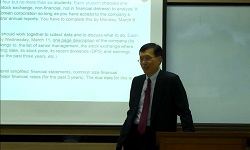In this study, for the purpose of producing super flowing concrete which has over 800㎜ slump flow, we discussed the effect of particle size distribution of binder on concrete flow properties. Firstly, we analyzed particle size distribution of six ca...
http://chineseinput.net/에서 pinyin(병음)방식으로 중국어를 변환할 수 있습니다.
변환된 중국어를 복사하여 사용하시면 됩니다.
- 中文 을 입력하시려면 zhongwen을 입력하시고 space를누르시면됩니다.
- 北京 을 입력하시려면 beijing을 입력하시고 space를 누르시면 됩니다.
https://www.riss.kr/link?id=A76527735
- 저자
- 발행기관
- 학술지명
- 권호사항
-
발행연도
2009
-
작성언어
Korean
- 주제어
-
등재정보
KCI등재
-
자료형태
학술저널
- 발행기관 URL
-
수록면
167-174(8쪽)
-
KCI 피인용횟수
6
- 제공처
- 소장기관
-
0
상세조회 -
0
다운로드
부가정보
다국어 초록 (Multilingual Abstract)
In this study, for the purpose of producing super flowing concrete which has over 800㎜ slump flow, we discussed the effect of particle size distribution of binder on concrete flow properties. Firstly, we analyzed particle size distribution of six cases which were used as a concrete binder. Namely, we regarded the first class portland cement as a base, and used 6 cases which were combined with limestone powder and fly ash at a regular proportion. We analyzed the flow and rheology in the condition of cement paste. After that, we examined the applicability of batch plant in concrete condition. As a result of particle analysis, the cement and fly ash have rare particle which has over 50㎛, but the limestone powder has 23 precent proportion .So we can find the fact that the limestone powder has the wider range of particle size distribution than that of the cement and fly ash. It was found that the more limestone powder proportion was added, the higher the paste flow increased. From this study, we can find the biggest flow property in the case of the most mixed binding of limestone powder. At that time, the plastic viscosity is 4.20㎩?s, and the yield value is 0.10㎩. On the basis of the optimal binder proportion derived from the previous study, we examined the applicability of batch plant. From the test results, we can make a new type of super flowing concrete of over 800㎜ slump flow which has excellent resistance against segregation. The super flowing concrete used in this study has 58.99㎩?s plastic viscosity and 21.83㎩ yield value. This result shows big differences compared with existing high flowing concrete.
목차 (Table of Contents)
- Abstract
- 1. 서론
- 2. 콘크리트의 유동특성 평가
- 3. 실험계획 및 방법
- 4. 실험 결과 및 분석
- Abstract
- 1. 서론
- 2. 콘크리트의 유동특성 평가
- 3. 실험계획 및 방법
- 4. 실험 결과 및 분석
- 5. 결론
- 감사의 글
- 참고문헌
참고문헌 (Reference)
1 한천구, "혼화제가 시멘트 페이스트의 레오로지 성상에 미치는 영향" 13 (13): 675-678, 1995
2 현철, "현장용 시멘트페이스트 레올로지 측정기구 개발" 대한건축학회 23 (23): 89-97, 2007
3 이건철, "전단박스 시험에 의한 서스팬션의 레올로지특성 검토" 대한건축학회 23 (23): 149-156, 2007
4 이상수, "이성분계 SFC용 모르타르의 레오로지 평가방안" 18 (18): 993-1000, 1998
5 이승헌, "시멘트에서 입도분포" 한국양회공업협회 (166호 3월) : 60-66, 2005
6 이승헌, "시멘트․콘크리트의 유동성. in: 시멘트지" 2004
7 김정길, "고유동 콘크리트용 페이스트의 레올로지" 6 : 75-80, 2000
8 日本建築學會, "高流動コンクリートの材料․調合․製造․施工指針(案)同解說"
9 角田忍, "回轉翼レオメータによる各種コンクリートのウーカビリティー評價" 10 (10): 343-348, 1988
10 李建哲, "せん斷”ひずみ依存性を考慮したフレッシュコンクリートのレオロジ一性質,に關する硏究" 名古屋大學 2005
1 한천구, "혼화제가 시멘트 페이스트의 레오로지 성상에 미치는 영향" 13 (13): 675-678, 1995
2 현철, "현장용 시멘트페이스트 레올로지 측정기구 개발" 대한건축학회 23 (23): 89-97, 2007
3 이건철, "전단박스 시험에 의한 서스팬션의 레올로지특성 검토" 대한건축학회 23 (23): 149-156, 2007
4 이상수, "이성분계 SFC용 모르타르의 레오로지 평가방안" 18 (18): 993-1000, 1998
5 이승헌, "시멘트에서 입도분포" 한국양회공업협회 (166호 3월) : 60-66, 2005
6 이승헌, "시멘트․콘크리트의 유동성. in: 시멘트지" 2004
7 김정길, "고유동 콘크리트용 페이스트의 레올로지" 6 : 75-80, 2000
8 日本建築學會, "高流動コンクリートの材料․調合․製造․施工指針(案)同解說"
9 角田忍, "回轉翼レオメータによる各種コンクリートのウーカビリティー評價" 10 (10): 343-348, 1988
10 李建哲, "せん斷”ひずみ依存性を考慮したフレッシュコンクリートのレオロジ一性質,に關する硏究" 名古屋大學 2005
11 G.H. Tattersall., "The Rationale of a Two-point Workability Test" 84 : 1973
12 The Self Compacting Concrete European Project Group (BIBM, CEMBUREAU, ERMCO, EFCA, EFNARC), "The European Guidelines for Self Compacting Concrete" 12-14, 2004
동일학술지(권/호) 다른 논문
-
전단보강된 플랫 플레이트-기둥 외부접합부의 불균형 모멘트 강도
- 대한건축학회
- 최현기(Choi Hyun-Ki)
- 2009
- KCI등재
-
- 대한건축학회
- 정성진(Jung Sung-Jin)
- 2009
- KCI등재
-
건설공사 표준품셈 제 · 개정 프로세스 및 가설공사 손율산정 개선방안에 관한 연구
- 대한건축학회
- 안지성(Ahn Ji-Sung)
- 2009
- KCI등재
-
- 대한건축학회
- 이종찬(Lee Jong-Chan)
- 2009
- KCI등재
분석정보
인용정보 인용지수 설명보기
학술지 이력
| 연월일 | 이력구분 | 이력상세 | 등재구분 |
|---|---|---|---|
| 2022 | 평가예정 | 계속평가 신청대상 (등재유지) | |
| 2017-01-01 | 평가 | 우수등재학술지 선정 (계속평가) | |
| 2013-01-01 | 평가 | 등재학술지 유지 (등재유지) |  |
| 2011-03-25 | 학술지명변경 | 한글명 : 대한건축학회 논문집(구조계) -> 대한건축학회논문집 구조계외국어명 : Journal of the Architectural Institute of Korea(Structure & Construction) -> Journal of the Architectural Institute of Korea Structure & Construction |  |
| 2010-01-01 | 평가 | 등재학술지 유지 (등재유지) |  |
| 2008-01-01 | 평가 | 등재학술지 유지 (등재유지) |  |
| 2006-01-01 | 평가 | 등재학술지 유지 (등재유지) |  |
| 2004-01-01 | 평가 | 등재학술지 유지 (등재유지) |  |
| 2001-07-01 | 평가 | 등재학술지 선정 (등재후보2차) |  |
| 1999-01-01 | 평가 | 등재후보학술지 선정 (신규평가) |  |
학술지 인용정보
| 기준연도 | WOS-KCI 통합IF(2년) | KCIF(2년) | KCIF(3년) |
|---|---|---|---|
| 2016 | 0.35 | 0.35 | 0.33 |
| KCIF(4년) | KCIF(5년) | 중심성지수(3년) | 즉시성지수 |
| 0.29 | 0.27 | 0.614 | 0.04 |




 ScienceON
ScienceON DBpia
DBpia







